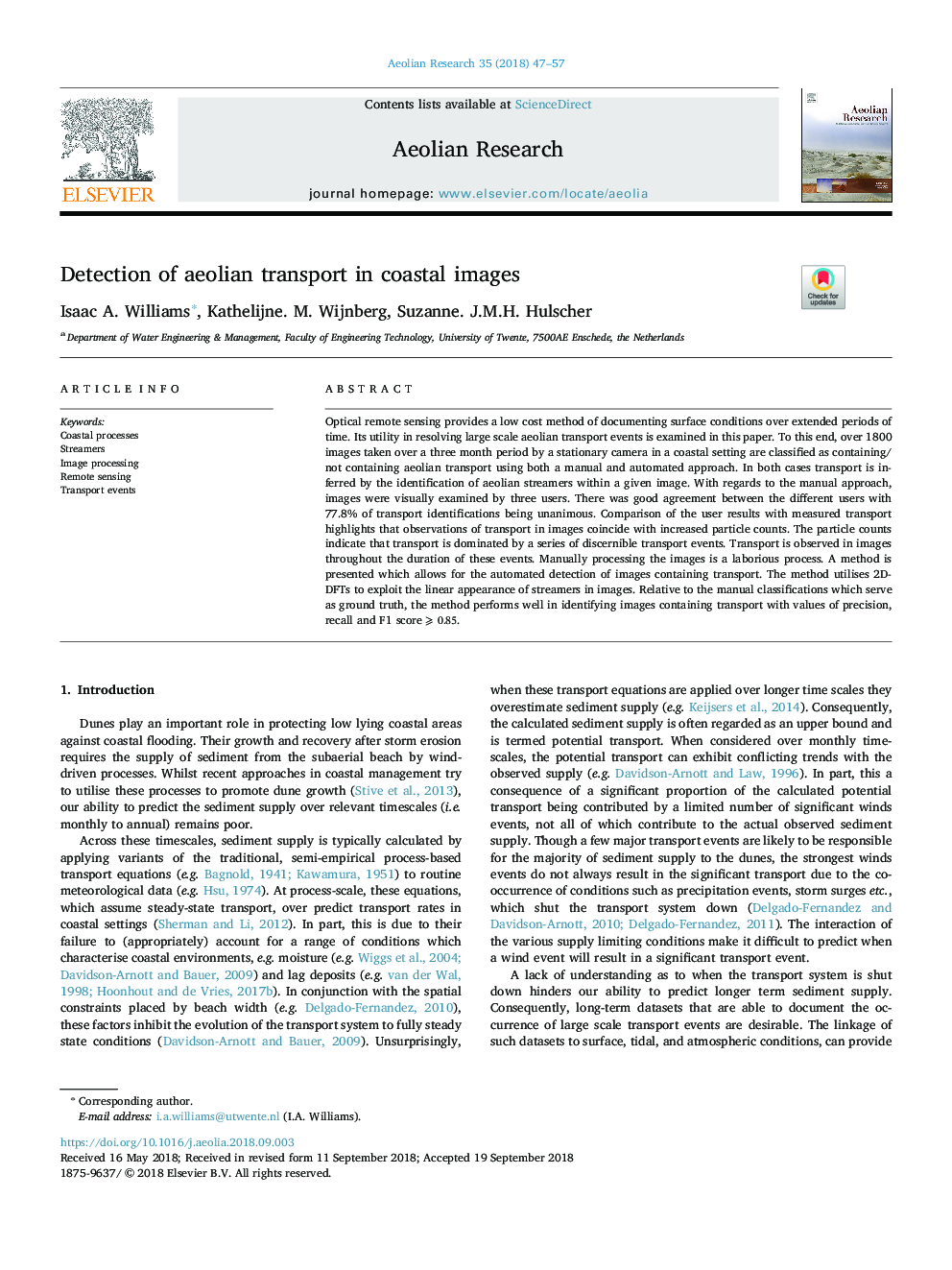| Article ID | Journal | Published Year | Pages | File Type |
|---|---|---|---|---|
| 11028530 | Aeolian Research | 2018 | 11 Pages |
Abstract
Optical remote sensing provides a low cost method of documenting surface conditions over extended periods of time. Its utility in resolving large scale aeolian transport events is examined in this paper. To this end, over 1800 images taken over a three month period by a stationary camera in a coastal setting are classified as containing/ not containing aeolian transport using both a manual and automated approach. In both cases transport is inferred by the identification of aeolian streamers within a given image. With regards to the manual approach, images were visually examined by three users. There was good agreement between the different users with 77.8% of transport identifications being unanimous. Comparison of the user results with measured transport highlights that observations of transport in images coincide with increased particle counts. The particle counts indicate that transport is dominated by a series of discernible transport events. Transport is observed in images throughout the duration of these events. Manually processing the images is a laborious process. A method is presented which allows for the automated detection of images containing transport. The method utilises 2D-DFTs to exploit the linear appearance of streamers in images. Relative to the manual classifications which serve as ground truth, the method performs well in identifying images containing transport with values of precision, recall and F1 score ⩾0.85.
Related Topics
Physical Sciences and Engineering
Earth and Planetary Sciences
Atmospheric Science
Authors
Isaac A. Williams, Kathelijne. M. Wijnberg, Suzanne. J.M.H. Hulscher,
